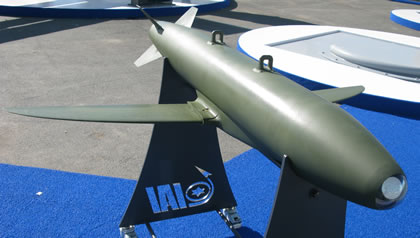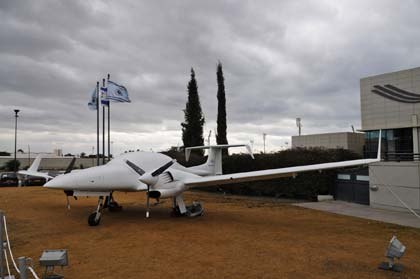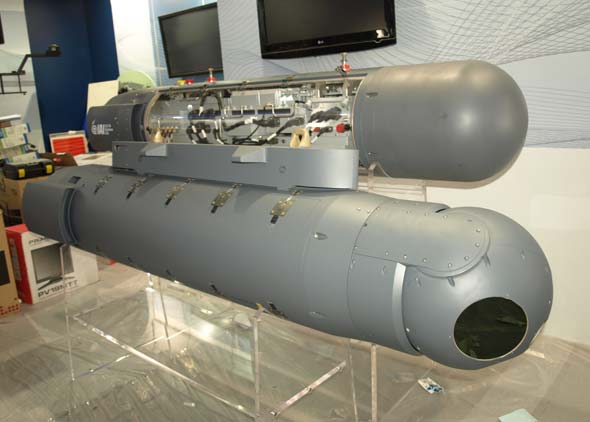U.S. and international air forces are becoming interested and open to utilizing off-the-shelf equipment in low-intensity, counter-insurgency and counter-drug operations in remote areas.
The U.S. Navy is already evaluating an armed version of Embraer’s EMB-314 Super Tucano under a classified evaluation program known as ‘Imminent Fury’. The Navy is currently evaluating a single aircraft and is seeking a budget of $44 million to embark on a larger program. The Special Operations Command, Air Force and US Marine Corps are also interested in employing off the shelf assets for low-intensity Intelligence, Surveillance and Reconnaissance and rapid target engagement. Armed Super Tucanos are currently operated by Brazil, Columbia, and the Dominican. Super Tucano can carry 1.5 tons of weapons, and can stay on a mission up to 6.5 hours.

At the Paris Air Show, Texas based Air Tractor Inc, a designer and builder of tough crop dusters, is unveiling their new Air Truck AT-802U – a two-seat armored, armed and protected aircraft designed to support special operations units from forward locations. The Air Truck is tough. Its engine, cockpit and belly are armored and capable of take small-arms fire, the fuel tanks in the wings are fitted with self-sealing material to stop hazardous leaks. The landing gear employs a flexible mount capable of absorbing rough landings. The cockpit is fitted with a roll cage, and airbag integrated harness, protecting the crew in case of crash landings.
According to Lee G. Jackson, design engineer at Air Tractor, armored counter-drug crop dusters have are already proven themselves in operations overseas, with several aircraft lost in crash landings, with the crew walking away unhurt. The aircraft is also protected by military grade electronic countermeasures, detecting and alerting on missile attacks, automatically deploying flare decoys to divert such missiles. Air Truck can haul up to 8,000 pounds of payload, including bombs, rockets, minigun pods or guided weapons. Currently, it has three hardpoints on each wing and three additional hardpoints under the the fuselage. Given customer requirements, each wing can be fitted with six hardpoints, used primarily for guided weapons such as Hellfire or smaller guided bombs. The aircraft is fitted with a stabilized, electro-optical (EOIR) payload mounted below the engine. Video images can be monitored in the cockpit and relayed to users on the ground, or other airborne platforms. Additional sensors can be carried as well, including specialized payloads capable of detecting specific biochemical signatures (multi-spectral sensors or foliage penetrating radars).
The aircraft is also provided with the ‘Hopper Bay’, a large cargo bay, located ahead of the cockpit where people, fuel or supplies are carried. The bay also accommodates an extra fuel tank extending the aircraft mission endurance to 10 hours. Air Truck has an oxygen system supporting the crew in high elevations. This capability was realized essential operating in the Andes, where teams had to pass high mountain ranges en route to targets located in the valleys. The Columbian and U.S. governments are already operating the crop-duster version of the aircraft. In addition, foreign air forces have expressed interest in the aircraft, as low-cost solution for low-intensity operations.
16/07/2010 UPDATE:
At the Farnborough International 2010 Airshow the aircraft is displayed with a militarized cockpit, Wescam MX15Di stabilized EO sensor turret, integrated with large HD displays and the all-new glass cockpit. Real-time video can be transmitted directly to ground units using the L3 Rover datalink.

Unlike other surveillance aircraft, the Air Tractor was built to be operated from farm fields and dirt roads, and maintained out of the back of a truck. It has the capability to reduce the cost and footprint of military operations while bringing state-of-the-art sensors and weapons to remote and austere locations. The exceptional 10-hour time on station of the Air Tractor and the massive 8,000-pound useful load allow the aircraft to carry a wide range of sensors and weapons.

Five optional weapons load out configurations, including four 500 or 1,000 pounds laser guided bombs and two GAU-19 multi-barrel 12.7mm guns with over 2,900 rounds, six Mini-Talon GPS-INS guided precision standoff attack weapons, four rocket pods loaded with 28 rockets, eight Hellfire missiles or a mixed load of four Hellfire and 16 DAGR laser guided rockets.























